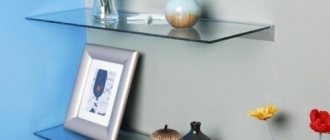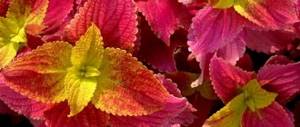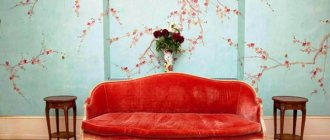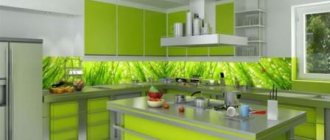Windows and colored glass
Stained glass window in the kitchen
Stained glass has become most popular for use in windows. Today, stained glass windows are as popular as wooden staircases for summer cottages. This is the very first and oldest version of the product. The installation of such structures allows you to recreate the unique reflections of multi-colored paints in the room, since each ray of the sun is displayed differently, having its own refraction and displaying the entire palette of colors.
Window with stained glass inserts
Of course, inserting such a structure into a simple window opening simply does not make sense, because light penetration is necessary.
Stained glass in the bathroom
But they will look great as a decorative option in hallways or bathrooms. Their use will also help to avoid unnecessary eyesight, since it is unlikely that you will be able to see anything through them.
Original stained glass windows in a modern living room
Stained glass can be used to decorate a living room, both in a classic and modern style. Classic and baroque coexist harmoniously with beveled stained glass, Tiffany and made using the etching technique.
Stained glass wall panel in the living room interior
If your living room is equipped with English or Spanish furniture, then decorate the room with stained glass windows.
Stained glass close up
For a living room decorated in the Art Deco style, casting or beveled stained glass windows are usually used.
Stained glass window in the design of the living room and library
You can complement the sentimental interior of a living room in the Empire style with stained glass windows made in the fusing or casting style.
Blue stained glass ceiling plinth
Boho and oriental style can be decorated with stacked classic stained glass windows with a brass or copper profile.
Window and door arches in the living room made of stained glass
A loft-style living room cannot do without bright accents. Such a living room can use stained glass made using classical or film techniques.
Stained glass windows to decorate a modern living room
In Japanese or Scandinavian minimalism you will definitely find stained glass windows made using sandblasting or film technology.
Original wall decoration in the living room made of stained glass
Room partitions
With the help of stained glass you can not only decorate the space, but also divide it into zones. For this purpose, special partitions are provided. They are able to turn a large room into several small ones. It is very convenient to use them in studio apartments, where there are no separate rooms at all, but there is one single area. Here, a stained glass partition will become simply indispensable and will help to arrange a separate kitchen and living room.
Stained glass partition
At the same time, the divided space will not need large and strong light sources, because glass (even colored) transmits it through itself, thereby uniting the entire space together.
There is also a small trick for artists that will allow you to visually enlarge the room with the help of stained glass. Usually a panel is created that supposedly demonstrates to the average person that there is another room behind it. In fact, there are small lamps behind it that illuminate it and create the illusion of a room. This technique is called “false stained glass.”
Stained glass windows in the living room - interior photos
Stained glass in the interior of a modern living room will constantly remind you of its classic charm. They give the room lightness, airiness and chic. While creating a creative atmosphere and a warm environment.
Building
These products are in great demand among various public institutions. Nowadays, almost no restaurant or club can go without them. This allows you to create a joyful mood for visitors and create your own unique atmosphere.
Stained glass windows in the restaurant
Stained glass can be found anywhere, from small inserts in various furniture to huge window openings.
Types of stained glass
There are such varieties:
- Mosaic stained glass. First, special blanks of certain sizes and colors are made, and then they are fastened together. Thus, it is possible to apply a specific pattern with well-marked lines and a small number of shades.
- Stained glass tiffany. Small pieces of glass with different colors are attached to each other with copper foil. This option is one of the most expensive among existing ones. Only true professionals can make high-quality Tiffany stained glass.
- Stained glass fusing. A colored pattern is applied to the glass surface. Then multi-colored pieces are laid out on it in full accordance with the drawn sketch. At the end, the painting is baked, and the result is a voluminous, deep work of art.
- Etched stained glass. Deep grooves are applied to the glass. They are made using etching technology. Then the resulting openings are filled with paints, creating a pattern.
- Painted stained glass window. This is just a skillful work of the artist, nothing extra.
- Film stained glass. They use a special film that creates an imitation of multi-colored glass pieces.
Related Links: 5 Modern Kitchen Design Ideas
The best place for stained glass
Let's leave the windows, especially apartment windows, alone, and think about where it is best to install stained glass in the interior of a particular room.
Entrance hall, corridor
Let's start with the hallway, since it is the calling card of our home. There are several options here: a suspended ceiling, an entrance door, interior doors, a wardrobe for outerwear. By the way, sliding wardrobes with stained glass windows have become very popular, and most often they are equipped with glass or a mirror with a sandblasted pattern.
Portal with stained glass
Stained glass on wardrobe doors
Plasterboard walls with stained glass windows separating the hallway from the rooms
Stained glass chandelier
In corridors that rarely have windows, stained glass will look best mounted in the ceiling, or in the form of overhead lamps.
Kitchen
In the kitchen, stained glass can be installed not only in furniture doors. In private homes, they can be mounted in a partition separating the kitchen from the living room or dining room. As an option, a false wall with an opening in the form of a window is installed on the wall along which communications run. It is very convenient to introduce lighting there, so imitation of a window will have not only aesthetic, but also practical significance.
Stained glass windows in a classic kitchen
Stained glass windows in the kitchen interior
Stained glass windows in kitchen cabinet doors
Note: It is better not to build stained glass windows into the kitchen ceiling, as soot and grease can settle on it, and it is difficult to clean at height.
Bathroom
In the bathrooms of private houses, a window is often provided - and not a small one at the top of the wall, but a full-size one, and even the bathtub is installed directly in front of the opening. Naturally, the question immediately arises about glazing that would make it possible to do without the constant use of blinds or curtains. Stained glass in this situation is the best solution, which will both solve the problem of privacy and decorate the interior .
Stained glass on the bathroom window is the ideal solution
Note: In bathrooms without windows, using stained glass, you can solve the issue of basic lighting by building a false wall with a glass window and placing lamps in the interior space.
Living room
In the main and largest room in the house, stained glass windows can be used in any way, with the exception of furniture. Perhaps it will be a large zoning closet separating the guest area from the bedroom, if it is a studio. In general, the best way to make a stained glass window clearly visible and well lit is to install it in a suspended ceiling.
Stained glass in the ceiling of the living room
Bedroom
The bedroom is the only room for which daylight plays virtually no role. Therefore, the window can be safely darkened by installing stained glass in it. The only problem is that from the facade side, if this is not thought out during the development of the project, such a solution will not look beautiful.
It’s better to consider the option with a false window, and if there is no room for it on the wall, you can pay attention to the ceiling. Such a design, as in the photo below, is installed at the head of the bed, serves as a night light and is an excellent interior decoration.
Stained glass for the bedroom
Types of stained glass
The very first such product can be called lead stained glass, which is considered a distant “ancestor” of modern varieties. This product was made from multi-colored glasses of various textures, which were installed in a profile made of lead or copper.
Modern stained glass windows come in the following varieties:
- "Grisaille". This option is considered a variety of classic designs, in the manufacture of which tempera paints are used.
- "Tiffany." Such designs are considered a more modern option. In them, glasses of different colors are connected using specialized copper foil, which is soldered to the glass elements. The result is a more refined and “airy” design. Such stained glass windows can be used for installation in windows, doors and other various niches.
- "Fusing". This option is a more modern modification of the classic type design. It uses glass chips and sand, which are fused into a single whole under the influence of high temperatures. This type of stained glass is most often used in damp rooms or as inserts into other stained glass structures.
The evolution of stained glass
There are many techniques for making stained glass that have emerged as technological progress has developed. In Ancient Egypt, pieces of colored glass were simply laid on a transparent sheet, fastened with lead bridges. For a long time, such stained glass windows were made for cathedrals and temples, so the subjects on glass often had a religious theme.
- The technology for making stained glass changed only several centuries later, during the Renaissance. Glass began to be processed with sand (the prototype of modern sandblasting), as well as painting and firing on it. The stained glass window became less intense in color and more and more resembled a painting made on glass.
- Until the mid-17th century, when religious influence began to wane, stained glass was an integral element of the architecture of many countries. The decline of its popularity lasted almost two hundred years, but in the second half of the 19th century, interest in this type of art arose again, only not in church architecture, but first in public and then private.
- This was the Art Nouveau period, which marked the heyday of applied art. The “well-forgotten old” came back to life; artistic functions were combined with utilitarian ones. Virages began to be used in the manufacture of household items, bringing beauty into everyday life.
Stained glass windows in the interior, Art Nouveau style
Stained glass on the wall in the interior, classic style
Gothic interior design with stained glass
American classic with stained glass panel
Due to its high cost, stained glass has always been the prerogative of only public buildings and aristocratic houses. Attractive aesthetics led to the birth of new, cheaper technologies that make it possible to imitate stained glass. This, in turn, made it possible to expand the scope of application: to design furniture facades, zoning partitions, to make ceiling and table lamps, fireplace screens, screens and much more.
Illuminated stained glass windows in the interior on the wall
Stained glass screen
Stained glass chandelier
Table lamp with multicolor lampshade
Using stained glass in the interior: fireplace screen
Stained glass windows in the hallway interior
Over time, other glass manufacturing technologies emerged. Now it can contain various inclusions such as metal threads or air bubbles, which gives interesting visual effects. Let's look at several basic technologies used today to create stained glass.
Types of modern stained glass windows
The technology that came to us from antiquity is still used today, having classical status. Only now, in addition to lead rods, copper or brass profiles are also used to frame glass of different shapes.
The frame gives the structure strength, but at the same time it weighs quite a lot. And this makes such a stained glass window limited in its use; it is impossible, for example, to install it in a suspended ceiling, and even more so on a door leaf, where in addition to weight, dynamic loads are also affected. So the use of such stained glass is also classic - in window openings.
Other types of stained glass are used in interiors, some of which we have presented in the table:
| Type of stained glass | Design features |
| Tiffany | This technique of creating stained glass was invented by the American designer Louis Tiffany at the end of the 19th century. It consists in the fact that the glass cut out according to the sketch is wrapped around the perimeter with copper foil, folded into an image, and then soldered. Tiffany stained glass is not inferior in strength to classic stained glass, but weighs much less. This technology allows the use of very small glass formats, which significantly improves the aesthetics of stained glass and allows you to create three-dimensional objects (lampshades, lampshades, vases). This glass looks very impressive when cleared, and is used for installation not only in windows, but also in doors, niches and partitions. |
| Doors with stained glass in the interior - film technology | This technology is called film technology because it is not pieces of glass that are glued to a transparent base, but fragments of colored film. It can be smooth or textured, plain or multi-colored, translucent and translucent. · Pieces are also cut out of the film, glued to the base in accordance with the pattern, and the ends on both sides are covered with a special narrow self-adhesive tape, simulating the color of copper or tin soldering. · In fact, this is an imitation of Tiffany stained glass, which, due to its low price, has found application in the manufacture of furniture and doors. It is these stained glass windows that are installed in niches, false windows, and door panels. · Such designs are varied in color and inexpensive, but are susceptible to mechanical damage and elevated temperatures. Therefore, illuminated film stained glass windows are not installed in the interior. |
| Filled (contour) stained glass in the interior - photo | And again an imitation of Tiffany. This technology does not involve gluing pieces of glass or film, but is an interesting technique for applying a pattern. First, a contrasting color outline of the image is applied with liquid polymer, which can be either black or white, gold or transparent. When the polymer hardens, the empty space inside the contour is filled with colored opaque or transparent varnishes. Next, the stained glass is fired at high temperature. In this case, the paints are sintered with the glass and become resistant to fading. This stained glass window looks very interesting and has no restrictions on its use. The price depends on the complexity of the design and approximately corresponds to the cost of film stained glass.
|
| Stained glass made using fusing technique | This technology also involves sintering transparent glass, but not with paints, but with pieces of colored and thickened glass or beads superimposed on it. In this case, the stained glass window can be either smooth or acquire a relief. Having melted, colored glass can remain in a given contour or smoothly flow over the boundaries of the picture, making them seem blurry. Thus, any image can be obtained without the use of metal profiles. At the same time, the glass is monolithic - and therefore more durable. It is often used for making interior panels, framing mirrors, decorating wardrobe doors and false windows. |
| Faceted stained glass window in the interior of the apartment | A bevel is a decorative bevel along the edge of glass, when a chamfer is removed from it to refract light. The wider it is, the better the effect, and the thicker the glass should be. The cut fragments that make up a stained glass window are called bevels. Since the glass used in this technology is thickened, it has a significant mass. Therefore, to fasten the fragments together, a brass profile is also used here (it plays the role of a frame), and in addition, the joints are reinforced with glue. Stained glass is very durable and can be used anywhere, even on door panels. It is not used only in suspended ceilings. The price is quite high, not much less than Tiffany, and mainly depends on the complexity of the design. |
| Ceiling stained glass windows in the interior: photo with sandblasted glass | Today, the technology of cold glass processing using sandblasting is in great demand. It sprays abrasive under high pressure, causing the top layer to break down and expose a rough surface. This pattern looks most impressive on mirrors and frosted glass. It is often used to make elements of suspended ceilings, interior and furniture doors, kitchen splashbacks and even countertops. To achieve the greatest aesthetic effect, LEDs are often inserted into the ends of stained glass windows. |
There are other techniques for creating stained glass, but those described in the table are the main ones.
Stained glass style
Stained glass, of course, is a beautiful thing, but its use should be somehow linked to the style of the interior. It is with its help that you can emphasize the idea and place accents, for which you need to correctly select both the color scheme and the plot. Let us highlight several main categories into which they can be classified.
- Classic implies symmetry - be it a floral plot or a geometric pattern. Glass can be dark or have pastel shades and look great not so much in windows, as they worsen the insolation of rooms, but in doors (including entrance ones), as well as in niches, partitions and suspended ceilings.
Tandem of wood and glass: stained glass ceiling in interior design
- The use of the Gothic style means, first of all, a house designed in accordance with its concepts. In particular, the distinctive feature is the narrow and tall lancet-shaped windows. It was in such windows that stained glass was inserted in ancient times. If there is an image on them, then the theme is mainly religious, or depicting knights, kings, mythological monsters. The color scheme is rich, using scarlet, purple, blue and gold shades.
Stained glass windows in a modern interior - Gothic style
- In the Art Nouveau era, stained glass received a second life and a new aesthetic. The main idea of this style is to exalt form over content. Intricate lines, sophistication and sophistication reign here. The main theme is marine, so all the lines follow the smooth curves of a sea wave or shell. This applies not only to the pattern on the glass, but also to the stained glass window itself.
Stained glass in Art Nouveau style
A typical plot for modernism
Stained glass partitions in the interior
- Stained glass made in the Art Nouveau style will fit into many other styles - for example, high-tech, avant-garde. It is the least demanding of the interior and actually “adapts” to the environment, subordinating it with smooth lines and the power of color. Such stained glass windows look best in illuminated niches, in zoning partitions and arches.
- The most popular today, perhaps, is abstraction, which is also based on the harmony of color and shape. Several multi-colored geometric shapes are usually arranged together - and, it would seem, there is nothing complicated about it. However, such improvisation requires talent from the artist, because it is the combination of colors and shapes that carries the emotional charge. And the popularity of such stained glass lies in the fact that it is suitable for any modern interior.
Abstraction
- Avant-garde implies a rejection of classical stained glass manufacturing technologies in favor of modern ones. Its plot can be trivial, made in a classical or, for example, antique style, or the same abstraction, but innovative ideas must be manifested in the creation of the panel. For example, the pattern is burned out with acid or engraving, and the parts are joined not with metal, but with plastic. To achieve an aesthetic effect, they use geometric designs in 3D format, a combination of rough and glossy surfaces, iridescent or gradient colors.
Vanguard
Color and style of stained glass in the interior: how to choose
You can choose any ornament and any theme. Some people prefer narrative stained glass windows in the interior on a household or even religious theme. Of course, such stained glass windows are appropriate only in luxurious interiors in the Art Nouveau, Neo-Gothic style, etc.
For niches and false windows, a landscape theme with realistic mountains, ocean beaches, and rainbow skies is often chosen.
Especially popular for the interiors of residential buildings are stained glass windows with a floral theme , repeating motifs from old projects of the late 19th and early 20th centuries in the Art Nouveau style. Such floral stained glass windows will look great in interiors in the art nouveau, art deco, neoclassical, and avant-garde styles.
Interior in Art Nouveau (modern) style
stained glass window
Their use in themed interiors is also successful - floral, English, Scottish, etc.
Stained glass windows with bonsai (suitable for ethno-interior)
Classic stained glass windows in the Tiffany style are suitable for interiors in almost any style, with the exception of ultra-modern, minimalist, technical ones.
In modern interiors, you can use stained glass windows made using one of the latest technologies, with geometric patterns and plot painting on a suitable theme (for example, an urban plot).
When choosing stained glass for your interior, you need to take into account not only the style of the room, but also the prevailing colors. It is worth turning to those colors that are present in furniture, decor, textiles, so that the stained glass window does not stand out too much from the overall picture.










